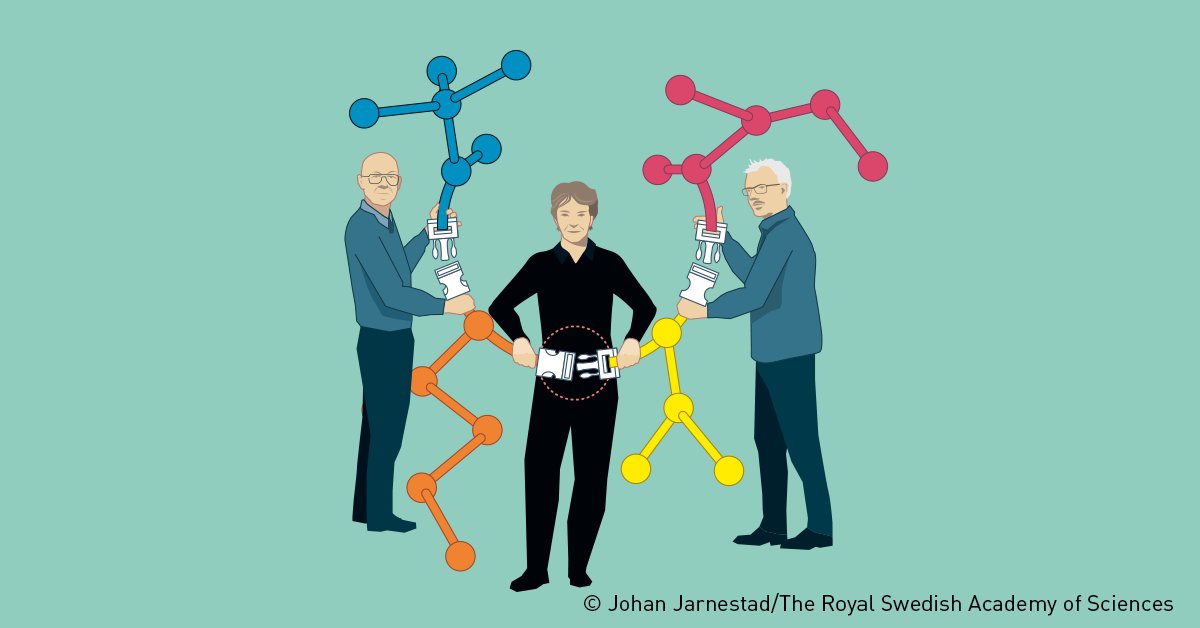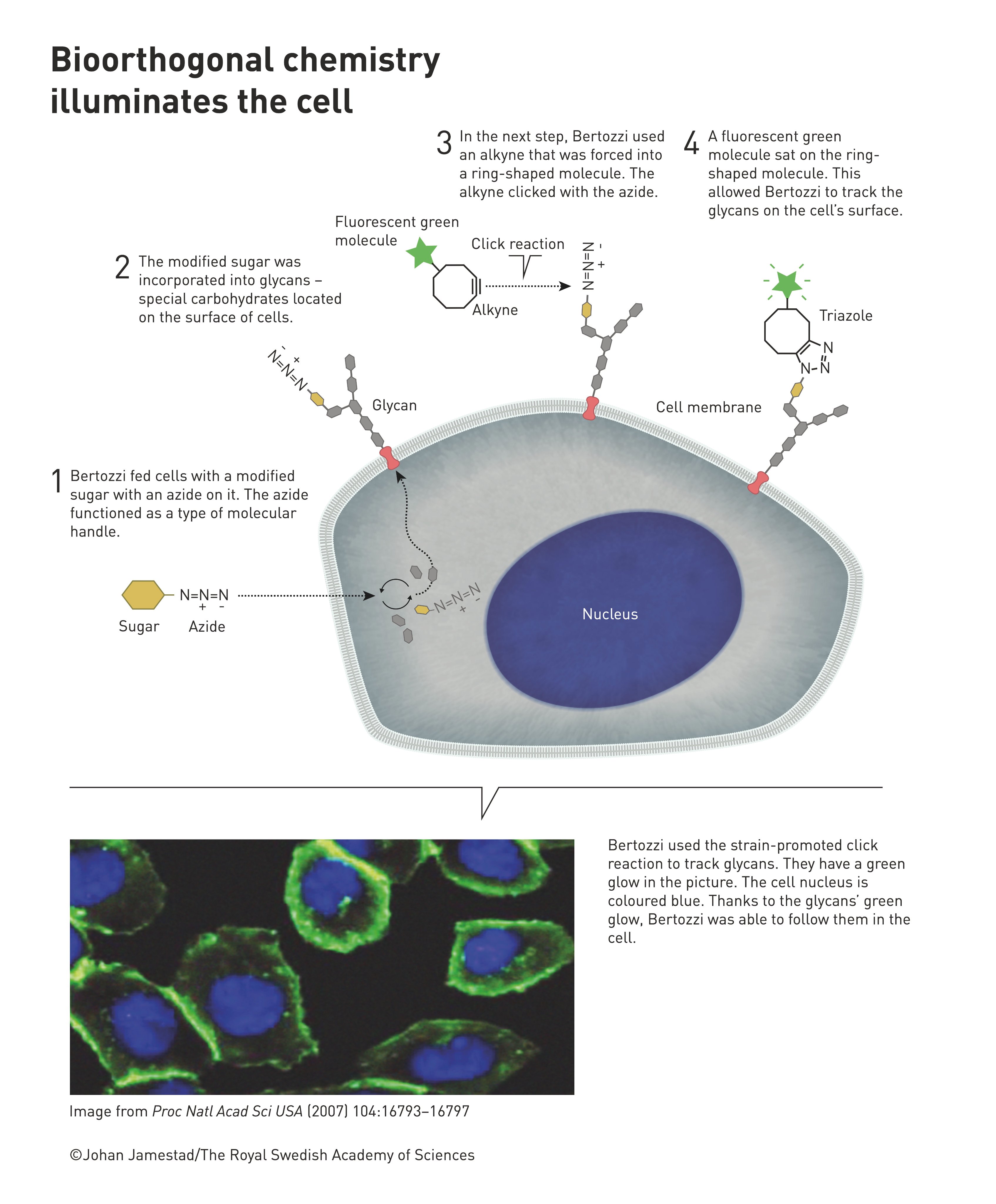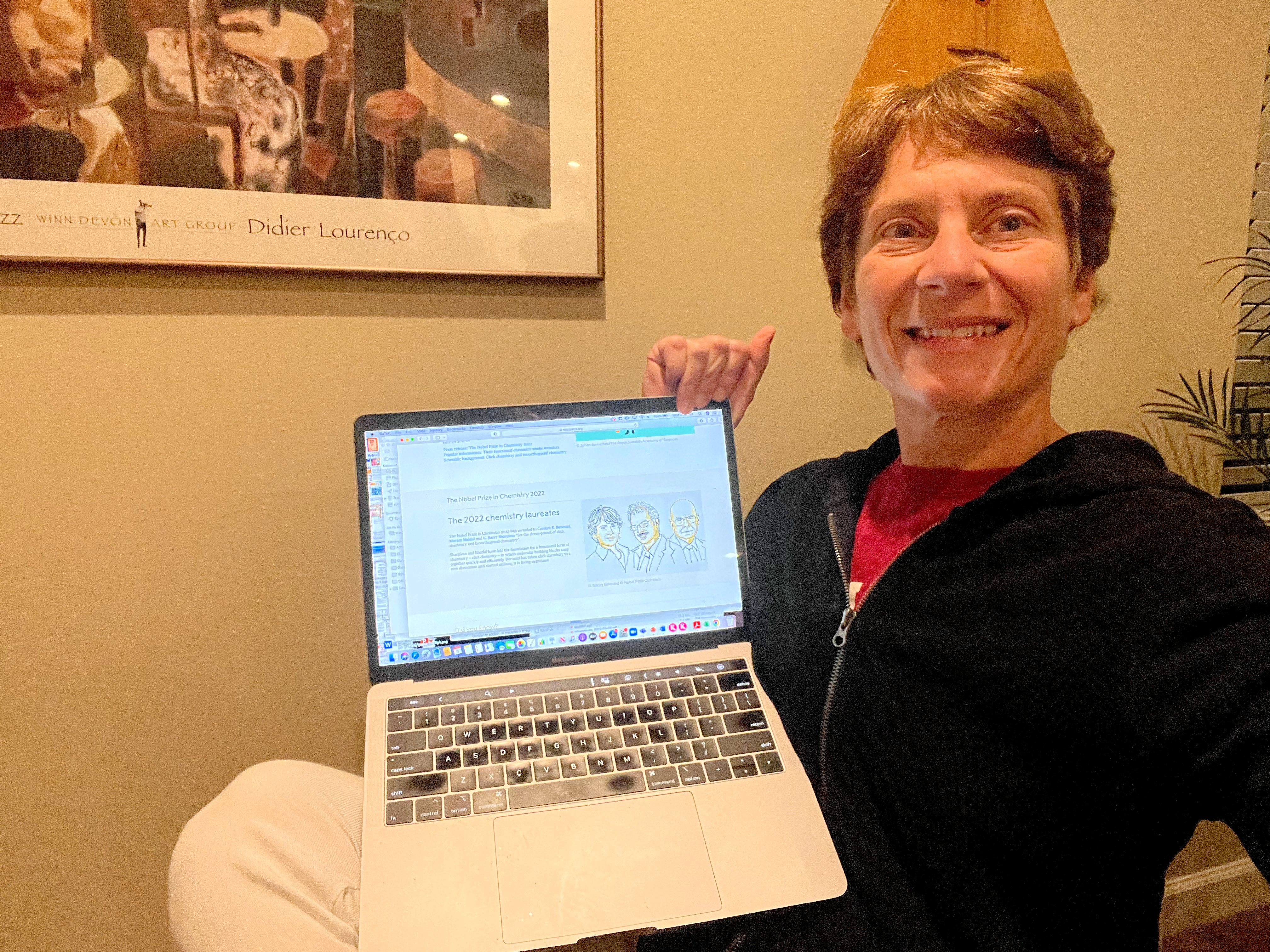
·The emergence of click chemistry and bioorthogonal reactions, to a certain extent, allows organic chemical reactions to be carried out in living systems. Therefore, it can open up a lot of cross fields and infinite imagination.
For their contributions in click chemistry and bioorthogonal chemistry, American chemist Carolyn R. Bertozzi and Danish chemist Morten Meldal and American chemist Carl R. K. Barry Sharpless shares the 2022 Nobel Prize in Chemistry.

On October 5, 2022, local time, Stockholm, Sweden, Hans Ellergren, Permanent Secretary of the Royal Swedish Academy of Sciences (middle), Jonas Arquist, Chairman of the Nobel Committee in Chemistry (left), and members of the Nobel Committee in Chemistry Olof Ramstrom has announced the winners of the 2022 Nobel Prize in Chemistry. The Royal Swedish Academy of Sciences has announced that the 2022 Nobel Prize in Chemistry will be awarded to Carolyn R. Bertozzi (Stanford University, California, USA) and Morten Meldal (Denmark, University of Copenhagen) and K. Barry Sharpless (Scripps Research Institute, La Jolla, CA, USA) for their work in developing click chemistry and bioorthogonal chemistry contribution. Visual China Map
Carolyn R. Bertozzi, born in the United States in 1966, is currently a professor at Stanford University in the United States.
Chen Xing, professor and dean of the School of Chemical and Molecular Engineering at Peking University, studied for a Ph.D. in the laboratory of Caroline Bertosi.
After the announcement of the 2022 Nobel Prize in Chemistry, The Paper immediately contacted Chen Xing to interpret the relevant achievements of the award.
Chen Xing told The Paper that click chemistry and bioorthogonal reactions should be the most widely used chemical reactions in recent decades. For a long time, everyone felt that their importance deserved the recognition of the Nobel Prize.
Chen Xing said that, in fact, bioorthogonal chemical reaction and click chemical reaction, these two reactions almost become a kind of reaction, which are widely used in chemistry, biology, materials and other fields. The two types of responses developed by the three of them solve different problems, but share common ideas and applications.

The 2022 Nobel Prize in Chemistry has made difficult chemical reactions easier.
These two reactions are to solve such a problem: how to carry out the ligation reaction very specifically and efficiently in a very complex system. Bioorthogonal reactions were first developed to label sugar molecules, hoping to label it specifically, without being interfered by other biomolecules, and without interfering with other biomolecules in the living system. However, there are various molecules in cells, and it is actually difficult to label a specific molecule with a chemical reaction.
Chen Xing said that click chemistry is also very similar, K. Barry Sharpless and Morten Meldal do organic synthesis. Usually a molecule has various functional groups. For example, we want the A group to react with the B group, but other functional groups that can interfere with the reaction need to be protected first. However, there is no way to carry out such protection operations in biological life systems, so in many cases, organic chemical reactions are difficult to use in life systems. The click chemistry reaction developed by K. Barry Sharpless and Morten Meldal does not need to protect other groups, and the two groups A and B can be very specific and fast at room temperature. reaction in the system.
This enables chemically efficient synthesis of a wide variety of compounds, such as drug molecules. Biologically, it is possible to see more or less of a certain type of sugar molecules in a living body, and to monitor changes in the levels of specific sugar molecules when a disease occurs, which was very difficult to do before.

Bioorthogonal chemistry illuminates cells.
Chen Xing introduced that chemical biology is an emerging interdisciplinary subject. His PhD supervisor Carolyn R. Bertozzi's first bioorthogonal reaction, to a certain extent, was actually one of the most important works in the field of chemical biology. It allows chemical reactions to be performed in living systems, while previous chemical reactions, such as making synthetic materials, required a special environment in a factory, but it is difficult to control this chemical reaction in the human body because of its reaction conditions. very violent. Or to put it another way, many chemical reactions cannot take place in water. Water is not a good solvent for many chemical reactions. The emergence of click chemistry and bioorthogonal reactions, to a certain extent, allows organic chemical reactions to be carried out in living systems. Therefore, it can open up a lot of cross fields and have infinite imagination space, which can be applied to Disease detection and treatment.

Caroline Bertosi's selfie after winning the Nobel Prize in Chemistry on October 5
Chen Xing said that his mentor, Carolyn R. Bertozzi, is a very smart and talented scientist. "My deepest impression is that she is always passionate about science and is very friendly to everyone. When I was doing my PhD in her group, she was very tolerant to all our students, and the atmosphere in the group was free. She also I encourage everyone to explore and do what they are interested in.”

